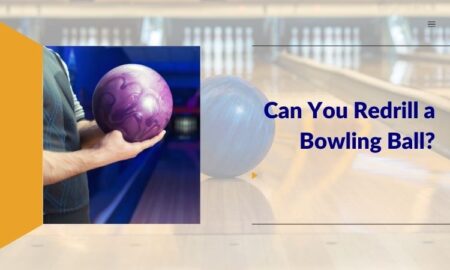In bowling, a score is a numerical representation of the number of pins knocked down during a game or series of games. The score is calculated by adding the number of pins knocked down in each frame, with additional points awarded for strikes and spares. The maximum possible score in a single game is 300, which requires knocking down all ten pins in all ten frames, including two additional bonus throws in the tenth frame if the bowler achieves a strike or spare.
Skilled bowlers influence their scores, such as accuracy, ball speed, and ability to adapt to changes in lane conditions. They frequently adjust their approach and ball selection based on their strengths and weaknesses, as well as the condition of the lane.
A score of 100 or more is considered good for beginners, while experienced bowlers aim for scores in the 200s or higher. Professional bowlers can consistently score in the 250s or above and may even bowl a perfect game of 300. Bowlers must practice and work on their technique to achieve a good score.
In this blog, we will provide you with an all-encompassing guide on what constitutes a great bowling score and, for those just starting, what should be their goal to achieve. Ultimately, what makes a good bowling score depends on the individual bowler’s skill level and experience. Regardless of skill level, the key to achieving a good score is consistent practice and dedication to improving one’s technique.
Bowling Scores Table
| Bowler Level | Score Range |
|---|---|
| Beginner/First-Time | 50 – 100 |
| Casual | 100 – 140 |
| Intermediate (Non-league) | 140 – 190 |
| Professional | 200 – 300 |
For Beginners/First-Time Bowlers:
As a beginner or first-time bowler, it’s essential to remember that it’s all about having fun and learning the basics. The good score ranges for beginners can vary, but typically, anything between 50 to 100 is an excellent starting point. There is no need to stress about achieving high scores; instead, focus on grasping the fundamental techniques of the game. Our comprehensive guide on aiming in bowling can help take your game to the next level! If you’re just starting out, don’t hesitate – check it out and start improving your score bowling score.
Improving your technique is crucial, as it sets the foundation for your future bowling experiences. It’s vital to learn the proper stance, grip, approach, and release to get the most out of your bowling sessions. Consistency and repetition are key to mastering the fundamentals. Invest time in practicing, be bold, and ask more experienced bowlers or coaches for advice. Remember, every professional bowler started as a beginner once, so don’t be discouraged by early setbacks.
For Casual Bowlers:
Casual bowlers typically bowl for leisure and relaxation, enjoying the social aspect of the sport. A good average score range for casual bowlers is around 100 to 140. Improvement is still possible with consistent practice, even if bowling isn’t your primary focus.
To elevate your game, try setting personal goals and working on aspects like accuracy and consistency. Practicing regularly can help you develop muscle memory and sharpen your skills. Although becoming a professional bowler isn’t at the top of everyone’s bucket list, it can be gratifying to see your scores rise and your technique more polished with practice.
For Intermediate Bowlers (Non-league):
Intermediate non-league bowlers have advanced beyond casual play and are now more serious about the sport. The good score ranges for intermediate bowlers are between 140 and 190. At this level, strikes and spares become increasingly important as they significantly impact your overall score.
Strikes are the most valuable, as they earn you ten points plus the score of your next two shots. Spares, on the other hand, award ten points plus the score of your next shot. Mastering the ability to consistently achieve strikes and spares will help boost your score and increase your chances of winning games.
For Professional Bowlers:
Professional bowlers represent the upper echelon of the sport, boasting impressive skill and dedication. These athletes typically achieve scores in the range of 200 to 300, showcasing their mastery of the game. Consistent high scores are a testament to their exceptional technique, precision, and focus.
Specialized equipment plays a crucial role in the success of professional bowlers. Custom-fitted balls, tailored to individual preferences and needs, offer improved grip, control, and accuracy. Additionally, professional-grade shoes provide better support, stability, and slide during the approach. Utilizing specialized equipment helps these athletes optimize their performance and maintain a competitive edge.
In conclusion, each level of bowling comes with its own set of expectations and challenges. As you progress from beginner to professional, focus on improving your technique, and don’t forget to enjoy the sport as you grow.
Average Bowling Score
A bowling average is a numerical value that represents a bowler’s typical performance over multiple games. It provides a useful benchmark for comparing skill levels and tracking improvement over time. Calculating your bowling average is simple, and here’s how to do it:
- First, bowl a series of games. To get a more accurate average, it’s best to have a larger sample size, such as ten games or more.
- Record your scores for each game. Add up the total number of pins you knocked down across all the games in the series. This sum is your cumulative score.
- Divide your cumulative score by the number of games you played in the series. The result is your bowling average.
- For example, if you played ten games and scored as follows: 100, 120, 140, 130, 110, 150, 125, 145, 135, and 115, your cumulative score would be 1,270 (100 + 120 + 140 + 130 + 110 + 150 + 125 + 145 + 135 + 115). To find your average, divide 1,270 by 10 (the number of games played), which equals 127. In this case, your bowling average would be 127.
Keep in mind that your bowling average can fluctuate as you play more games, so it’s essential to continually update your calculations to ensure an accurate representation of your current skill level.
Summary
For those striving to bring up their score, we highly advise taking pleasure in the process and engaging in frequent practice sessions. This approach will help refine your technique, preserve consistency, and enhance overall performance! Remember that as you progress in the sport, setting personal goals, focusing on improvement, and maintaining a positive attitude will contribute to a rewarding bowling experience. We hope this guide has been helpful and that you find success in your mission of becoming a bowling champion!
May the pins fall without fail. Happy Bowling!



![Urethane Vs Reactive Resin [Choose the best Bowling Ball]](https://bowlingroller.com/wp-content/uploads/urethane-vs-reactive-resin-450x270.jpg)



